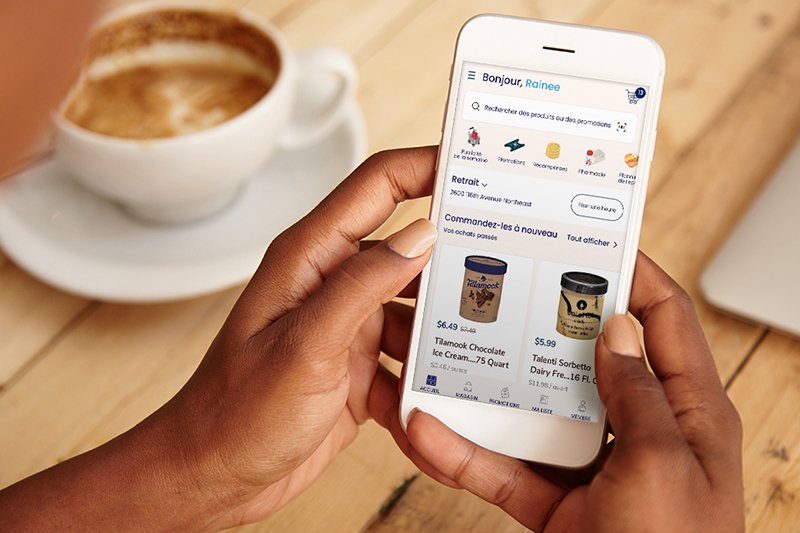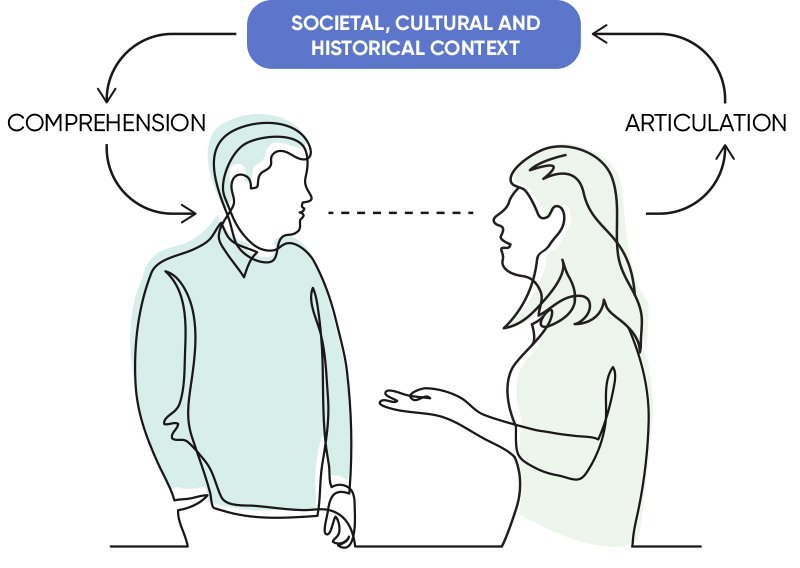Localization in the retail industry is nothing new. Since the emergence of the first online stores, retailers have had to adapt the way they speak to customers to stay competitive. New technologies in AI and data science are taking center stage in the fusion of in-store and online customer experiences. However, the demand for more personalized shopping experiences underscores the significance of localization in the retail landscape. Technology has transformed how and where we interact with products and services, but it has not changed who we are or how we relate to them.

Mobile applications used for retail can be made to display the native language of the customer, promoting a deeper connection with a higher likelihood of sales.
Localization demonstrates empathy and understanding across the personalized customer journey
Studies have shown that people are more comfortable engaging and making purchases on e-commerce sites when information is presented in their native language. This “Can’t Read, Won’t Buy” mentality was highlighted by a research team that monitored the localization performance of Fortune 500 companies over 15 years. Their findings showed that companies with localized content were 1.8 times more likely to experience year-over-year revenue growth and 2.5 times more likely to experience profit growth. Based on a survey of 8,709 global consumers in 29 countries in Europe, Asia, North America, and South America, CSA Research found that 76% of online shoppers prefer to buy products with information in their native language, while 40% will never buy from websites in other languages.
Translated content in your online store and email marketing are the most obvious aspects of localization. Success for any retail business also requires a steady connection to and communication with their customers. How you communicate will ultimately create the bond you need with your customers, which will in turn decide your success – or failure – in a specific market region.
Don’t forget – every retailer is vying for the same customers’ attention and inspiring loyalty for their brand or services. To get an edge over the competition in both domestic and global markets, your customers need to see that you understand them as humans with individual needs, preferences, and histories, not just data points to be marketed to.
Localization is not just an added layer of convenience for your customers or a necessary step to sell your product to more people – it’s a way of showing your audience that you recognize who they are even before they become customers and that you value their diverse backgrounds, by creating a great experience across all points of their journey.
Here at Blueprint, the Localization Team supports a whopping 27 languages for one of the largest online platforms worldwide. We localize promotional materials, website and product copy, B2C communication, technical documentation, updates/release notes and more. No matter where you are online, a simple selection of your preferred language from the drop-down menu presents all content in that selected language.
How retailers should fine-tune localization to get it right
At a time when Localization Specialists like ourselves worry if they will soon be replaced by robots, it is necessary to show the extent of what effective localization means and why it matters. Localization is not a simple conversion from one language to another. Localization is much more involved – and special. It takes over where translation ends.
Machine translations trained with artificial intelligence and TMs (translation memory) of CAT tools (computer-assisted translation software) are indispensable for translators today. The problem is, relying on them exclusively for your translation needs bears a number of dangers that may be overlooked by considerations of time and cost. For one, there is the danger of translations being too tightly source-oriented, which means translations copy the structure and style of the source material literally and thus sound unnatural in the target language.
There is also the danger of sounding generic and boring—which negatively impacts customer engagement. In their effort to keep new translations consistent both within one text and across texts, machine learning (ML) language models and TMs choose the same translations again and again. For instance, if there are four different choices for the word “sale” in a certain language, they will choose the most frequent one of those four, which will be used consistently going forward while the others are filtered out and benched. Less commonly used words will “disappear” from the available choices and will be marked as mistakes and inconsistencies, disregarding the richness and flexibility of human language.
Contrary to popular belief, AI is not yet sophisticated enough to take over the world, or our communication (completely)
Do you want your announcement of a special event to read like your FAQ on how to change your password? Does a fashion retailer want their website to read like that of an electric toothbrush manufacturer? Or would a tea import business with strong ties to local communities be happy to sound like a global tech giant? The answer, you guessed it, is “no.”
For this reason, you need experienced and skilled localizers. Quality localization requires creativity; it requires judgment and sensitivity to context that even the most advanced machine learning models don’t (yet) have. Localization specialists deliver everything from small tweaks in the translation of your B2C emails to revamping an entire marketing campaign. They are a crucial factor in how your brand and your company will (or will not) be perceived in a given market region.
Take the example of BMW. For the past five decades BMW’s slogan in Germany has been “Freude am Fahren.” Otherwise known as “the joy of driving.” In America, however, market and localization specialists decided “joy of driving” would not resonate with the target audience for premium European cars and changed the slogan to “The Ultimate Driving Machine.”
A machine cannot make this intuitive leap, because communication is not just words. Communication involves crucial societal, cultural and historical context. An AI system or TM cannot access this contextual information because they are fed only words (the tip of the iceberg of what we call “communication”) and these words don’t contain all the necessary information that humans use to make sense of the world. As humans we can express far more than the exact meaning of the words we use when we write or talk because we live in a shared reality. But AI algorithms and TMs don’t share that reality with us.

Conversations between people includes important subtleties, like societal, cultural and historical context that machine learning (AI) cannot provide with translation services.
Localization is essential for effective technology, but humans are essential for effective localization
Localization professionals have the keen ability to make that creative leap. They know how to best establish communication and engage with potential customers. They are adept at navigating the choppy waters of formality and cultural references unique to their region and language. They will help give your brand what it needs to stand out: a unique, human voice.
The professionals on Blueprint’s localization team come from a wide variety of backgrounds and bring a wealth of knowledge in translation and localization with them. We are keenly aware of both the utility and limitations of machine-generated translations, and take great care to craft context-specific, vibrant texts that read as if they were originally written in their target language and with the target audience in mind. Thanks to us, our client’s communication with their customers, and their developers’ communication with their audience, is smooth and authentic.
Check out what we do to learn more about the wide range of localization expertise Blueprint Technologies offers.

